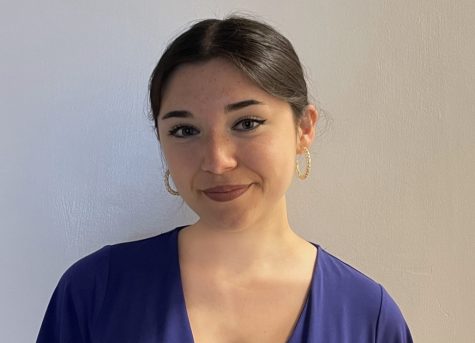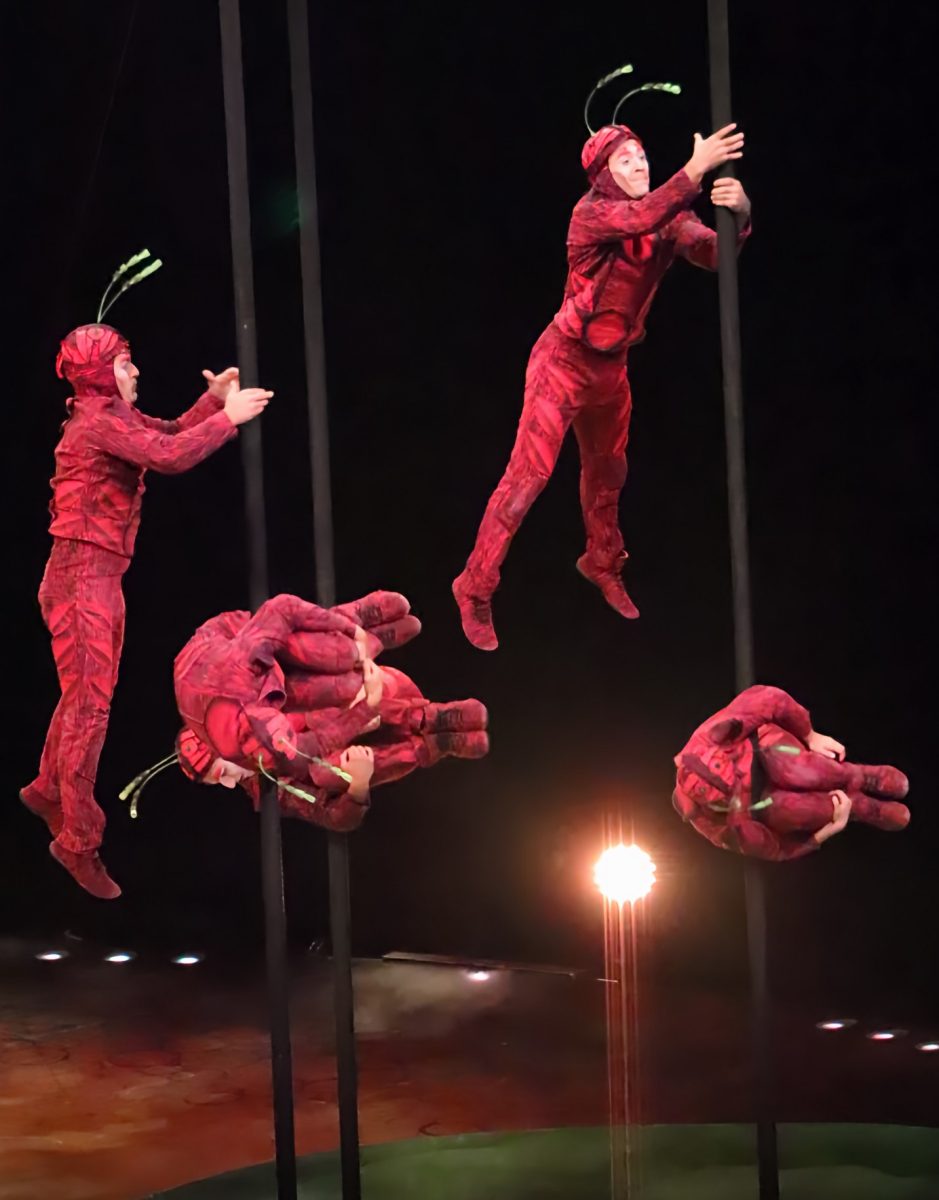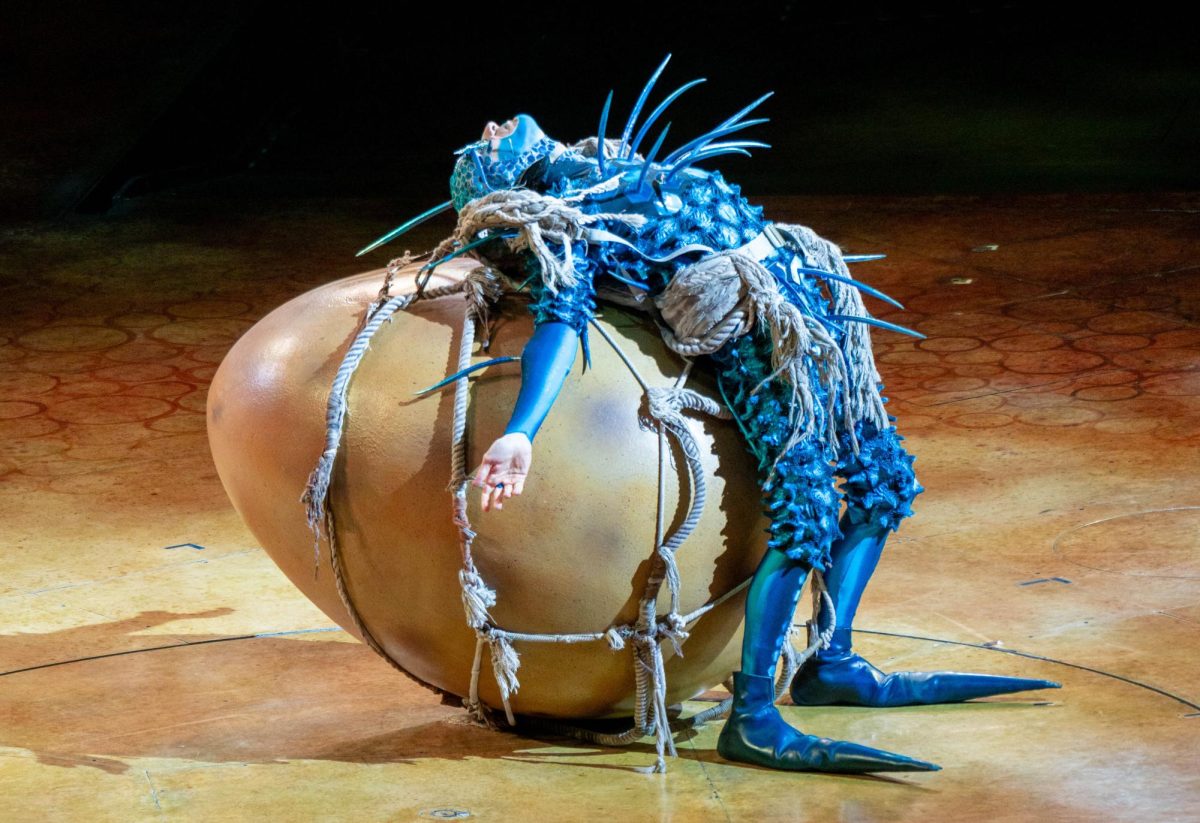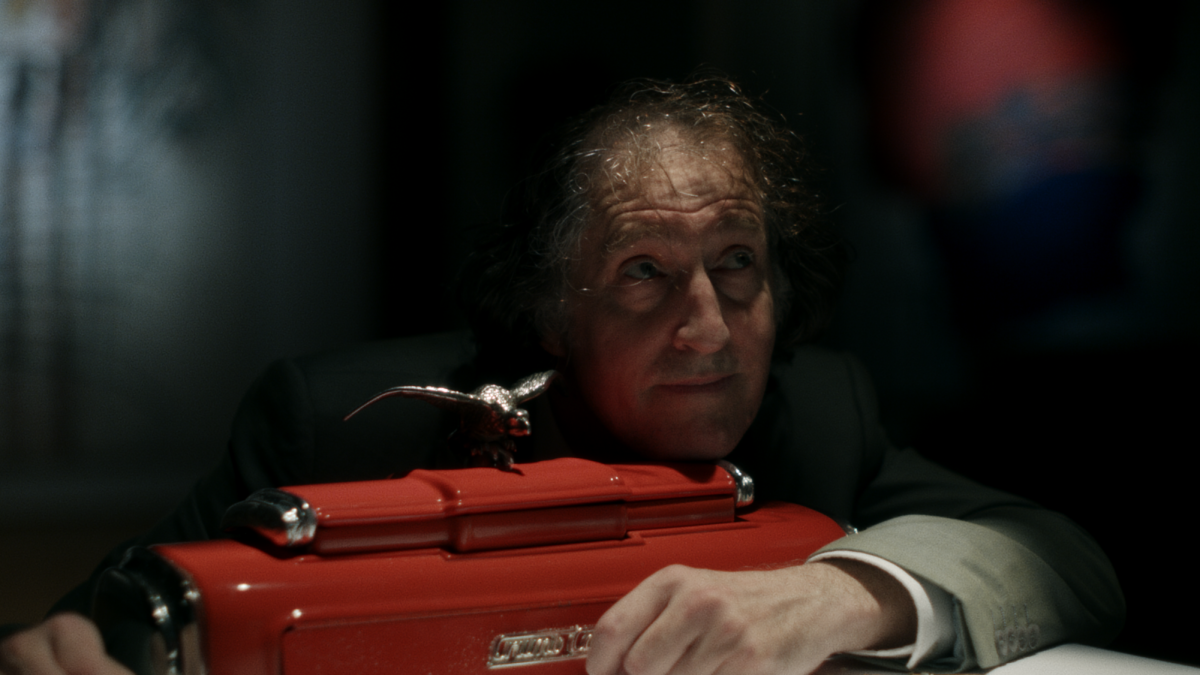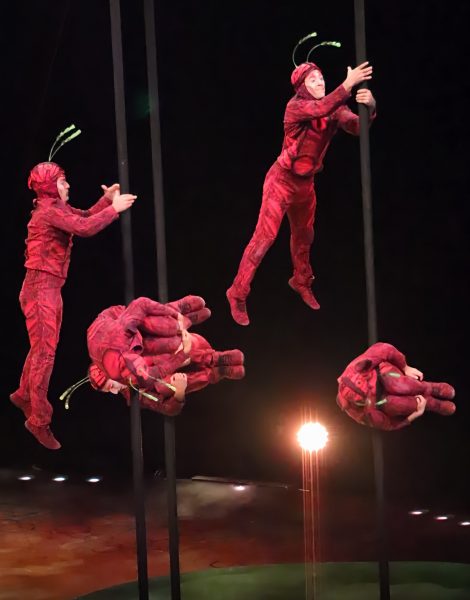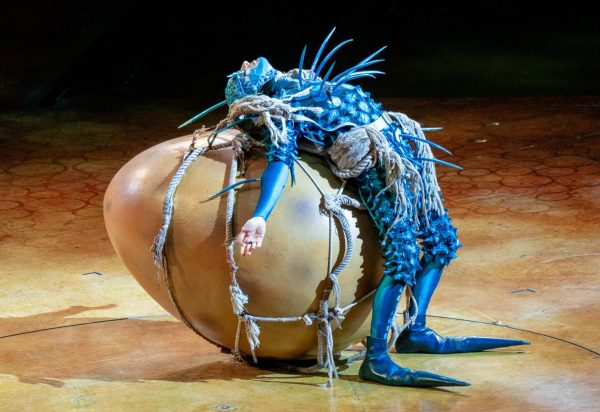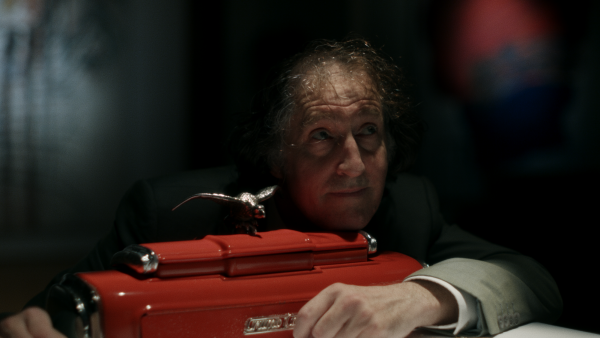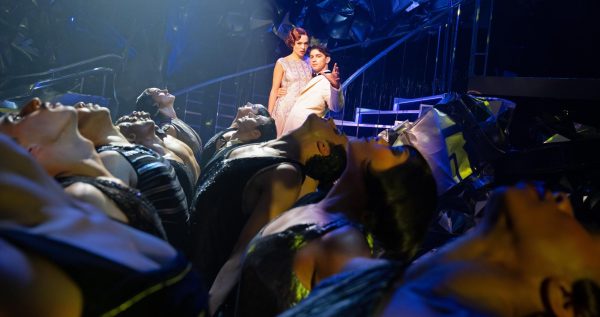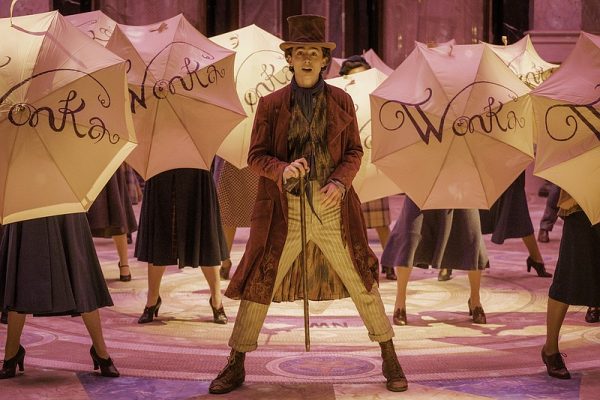Details paint the picture of “Evita” at American Repertory Theater
Shereen Pimentel (Eva), Omar Lopez-Ceper (Che), and the company of “Evita” at American Repertory Theater, playing through July 30.
June 7, 2023
More than 40 years after its debut on Broadway, the American Repertory Theater brings an innovatively staged and detailed rendition of “Evita” to Loeb Drama Center in Cambridge, Mass.
The story takes place in Argentina, where a poor young girl, Eva, desires fame. She seduces men to climb her way to an acting career. She meets the future president of Argentina, Juan Perón, whom she eventually marries. During Perón’s campaign for the presidency, Eva gathers support for her husband among the working-class people, initially relating to them but later embodying a superiority complex and looking down upon them, using their support to her advantage without any real care for them.
While the vocals and tango dancing are not to be ignored, the set design is what sets the A.R.T. production apart from previous stagings of “Evita.” With a simple stage decorated by five arch-shaped doorways, director Sammi Cannold and choreographers Emily Maltby and Valeria Solomonoff, are able to play with silhouettes in the doorways and create stories within the background of the stage under each arch.
These story-framing arches are not the only powerful stage design. During the famous ballad “Don’t Cry for Me Argentina,” Shereen Pimentel, the actress portraying Eva Perón stands in the center of nine risers filled with beautiful foliage to crisply deliver the lyrics with her powerful voice and emotional expressions.
The last notable stage design element is the small step down from the main stage, where narrator Ché, played by Omar Lopez-Cepero, spends most of the show. When speaking to the audience, he plays along his sliver of stage, with no one else entering until Eva steps upon it toward the tail end of the show, taking a narrating role herself. When Ché steps up to the main stage he is usually observing; his sole interaction with the characters is a dance with Eva. His isolation from the story grants a relationship with the audience as a reliable narrator. While separate from the plot, Ché’s emotions and passion for the story shine through, not to mention his strong vocals, needed for many of his solos during which Lopez-Cepero puts his belting and riffing abilities on display.

Stage design could not paint the story alone. Another element that makes A.R.T.’s rendition of “Evita” successful is the costuming, designed by Alejo Vietti. The gray color scheme for a majority of the cast allows for the evolution of Eva’s white dresses to be noticeable. Eva begins the show in a flowy and youthful white dress, and, as she gains power, her white blazer-jacket dress mirrors her strength.
The ball gown she wears for the grand number “Don’t Cry for Me Argentina,” is as forceful as her character has become. When Eva falls ill, she is shown in a silky nightgown, her weakness displayed by the apparel that decorates her body.
Eva’s costumes are not the sole accomplishment of Vietti. In fact, to accompany the high-energy tango dancers, their dresses move to the music and at times are adorned with silver jewels. The tango dances are captivating by themselves, but with the added movement and details of their dresses, the audience can not take their eyes off the dance numbers.
The production would not have been complete without its ensemble. During scenes when there are a lack of props, the ensemble’s presence fills out the stage. Some of the most powerful parts of the performance are when the ensemble is still, holding its position and singing out toward the audience.
In conjunction with the role they portrayed, the officers are not as united in their movements as would be expected from militant figures. The slight differences in timing among the officers weaken their appearance on stage.
This rendition of “Evita” is full of intentional decisions. Cannold’s eye for detail brings this Argentinian story to life on the Loeb Drama Center stage through July 30.
–June 7, 2023–




